Pronounced See -Veelkh – kyao
The Sivilão are the denizens of Õndem who have spent the past century between the pulse and the awakening trying to rebuild from a once glorious, dominant civilization across the stretching planar expanses of Õndem. Though their current state is but a shadow of what used to be, smaller, more disconnected, and somehow even more dogmatic than they were before
What lay before Jãrsta
Õndem (Yohn-dem) Was the reality that was the home of the Raddir and the planar expanses of Õndem, a planar reality of draconic sound that resonated all landmasses into shards that rippled across the universe. Amongst these shards were vast wildernesses of many draconic creatures. But legend of the ancient Sivilão memories amongst the Prejager claim that an entity was born from the sound of the Raddir, shaking stones forced together and melded. One day forming the great Prejarngalmõk (pray-jarn-Galkhem-Yok), a hydra of countless heads, each whirring and listening to the chimes of the cosmos.
There was also a sapient draconic species that had evolved before the formation of the Prejarngalmõk, the small Éldimor, who had sustained and created small communities across the planar over millions of years of gradual evolution. The legend has it that the many heads of the Prejarngalmõk after many eons came to a consensus upon the way of the world and would create the Fifth decree, Fim Ēodin Õheduradir and would set out to create it’s vision. over 30,000 years it would begin to attract the Ẽldimor of all reaches to its cause, those who refused were crushed under its power. As the remaining would gather around they would start to build the first Õfuth and the Prejarngalmõk would begin its warp upon the Ẽldimor. Over those 30,000 years the Prejarngalmõk would change the Ẽldimor gradually.
Through selective breeding, magical manipulation and pulses of resonance, it would create 3 new specialized species from the progenitor Ẽldimor. These 3 species would become known as the Drekir, Ormer, and Mavõtur. and, at the end of these 30,000 years the foundations of the first Õfuth, would be complete and the first eon of the sivilão would begin. Sivilão, being an untranslatable word meaning something more like “The Social Machine”. The sivilão would begin waging war upon the surviving Ẽldimor who had not fallen or knelt to the Prejarngalmõk ãf sivilão, expanding their great city into an urbanized continent of size and grandeur known as Agõrl, building knowledge upon which to better exercise their faith of society. After the last stand of the Ẽldimor in the mountain of Tal on the plane of Logáu, the Sivilão would enter a grand 10,000 year period of prosperity known as Rindãltul,the Golden age of the Sivilão, in which the system would function with few flaws continuously and endlessly into the future.
Jãrsta: The Far Throw
(Pronounced Je-yar-stah)
As a Brazilian miner would breach the Steiron and accidentally begin The Pulse, the reality of Õndem would itself be entirely shattered, with much of it physically sucked from one reality into the other. This cataclysm would be an apocalypse that would almost entirely destroy Õndem, it would itself cause a break of reality that would completely destroy sivilão society, killing over 90% of its population of billions and scattering the remnants across the planar, with most never to see the grand plane covering city of Agõrl again. The scant few survivors would find be scattered across hundreds of planar, including the Americas, without explanation, reason, or purpose. For the early years most of the few survivors would try scrape by with many more dragons of all species dying from various causes, with this struggle for survival continuing until the reformation of the sivilão õfuthar.
Õnjardil: The Rebuilding
The once great Prejarngalmõk was not left unscathed by Jãrsta. Indeed it was still intact but each of its countless heads screamed in fear, rage, panic, confusion, dismay, and all wondering what had happened and why had it happened? They had followed Fim Ēodin perfectly and yet everything had fallen apart regardless. Each head of Prejarngalmõk would disagree with the others on what happened and what to do. Eventually on the 3rd day after Jãrsta their disagreements grew so bitter that various factions of the countless heads would separate from the mass, each going their own way to rebuild the world that was in the way that they saw fit. From this great Schism would grow the many Prejager that would create the new many Õfuthar across the planar of the DragonScape. Many of the other remaining heads would flee into the 2nd Construction to ponder what had happened and why, forming the Spire in the 2nd construction. The various Drekir, Ormer, and Mavõtur survivors in the meantime would spend weeks, months, years or even decades surviving on their own in small loose settlements. some rebuilt shammed shadows of the society they remember and others just tried to start as anew as they could. Sometimes species worked together and other times apart, things like conflict and struggles to survive were common in this time as they were after the drekir awakening 100 years later.
Many of these groups of survivors, particularly the ones that were never found by the prejager would eventually become descendant and divergent éldimor societies, entirely separate from the sivilão that they had descended from.
But for some, eventually they heard a familiar call as the Prejager would arrive to their new homes and rally the survivors amongst them to the cause of their newer, usually more dogmatic interpretations and adjustments of Fim Ēodin to build the Õfuthar again.
The Pre Awakening Period 0S to 0PA
During this period the rebuilding sivilão would try to adjust to the new worlds they found themselves in.
First were the new and more dogmatic interpretations of Fim Ēodin. For many of the new, smaller Õfuthar that were being built across the DragonScape a common belief would arise. While specifics vary most of the sivilão believe that Jãrsta was a punishment for the decadence of the empires of the past and, while they were given their chance to begin anew by the Raddir, there would be no guarantee that a 3rd chance would await them if they failed again. To most sivilão õfuthar, they would see this as their last chance to do the system right lest everything is destroyed forevermore.
The details of this core belief would vary however and to each õfuth, these minor differences between õfuthar would amount to a deep dangerous heresy that would have to be crushed. Amongst many planar in the 100 years prior to the Drekir Awakening and well after it, vast apocalyptic wars of annihilation would break out between the burgeoning sivilão of their respective lands, often leaving vast scars of these wars in the land and prominent sivilão ruins scattered amongst many planar just as the human ruins of the Americas. Many Õfuthar fell to these wars of heresy by the hands of other sivilão armies.
Particularly of note in the American plane the sivilão, horrified by the existence of the prior prepulse ruins of humanity would also set about large scale demolition operations throughout the pre awakening period and into the post awakening period. Often the strange structures and organizations of these cities would be otherworldly to the sivilão. These demolition operations would often leave once heavily urbanized regions of the Americas as empty fields, with what little remained buried under the ground and grown over by young growths. Combined with magical degradation, natural degradation, and damage from the pulse and other magical catastrophes sivilão demolition would be a major contributor to the lacking state of human ruins in the post awakening period.
The sivilão would also of course be rebuilding. Throughout the centuries as aided by the resonance of the prejager and mavõtur as well as the dedicated fanatical ormer and drekir, they would build many smaller õfuthar throughout the DragonScape. While they do not take up a large amount of space compared to human cities, they would be intensely more dense, packed, and urbanized. Converted into metropolises for thousands if not tens of thousands of drekir, ormer, and mavõtur. The sivilão are for all tense and purpose the most powerful societies of the early dragonscape. they have powerful manufacturing capabilities in magical and mana based materials and technologies. They have the largest and densest populations of the dragonscape, and they are highly organized and fanatically motivated.
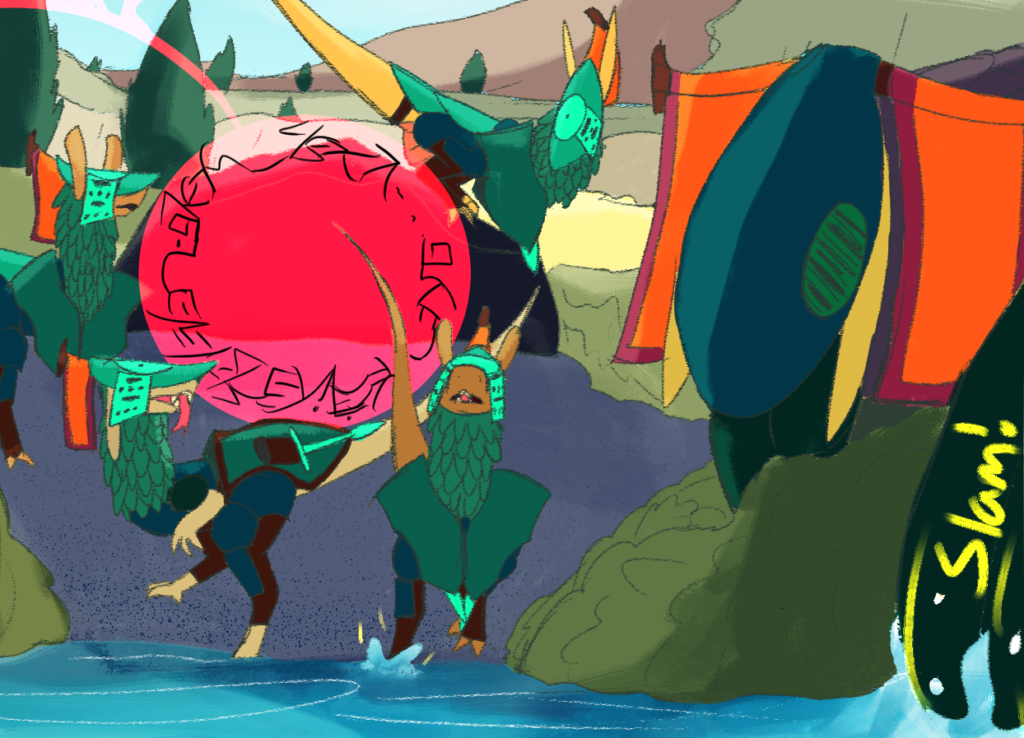
The Post Awakening Period
While not every plane has the presence of the sivilão, the planar that do would just be dotted by a handful of highly dense urbanized Õfuthar, with often less than 20 square km holding tens of thousands of drekir, ormer, and mavõtur with a prejag at the center of each.
These new sivilão societies were pale imitations of of that from the golden age but were nonetheless well organized and mostly adapted to their new world and the dangers within it. Though the awakening, of course, would create problems for the sivilão. Almost as if from nowhere, thousands of strange drekir would start cropping up in many regions that were far more numerous and culturally distinct. They were not of sivilão lay and spoke strange languages never heard by the sivilão.
More confusing they had nothing with most early expeditions finding only fragile leantos, small fires and panicked individuals with neither clothing nor tools. But Fim Ëodin called therefore, they would be taken by force if they did not come voluntarily. Though the resistance was often far more steadfast and vicious than expected, the sivilão would mostly win these sorts of battles. But over time as the years started to pass these small groups became more organized, better equipped and prepared, and far more able to deal with the sivilão into the awakening period.
Throughout the awakening period most sivilão õfuthar would present a grave threat to the bands, tribes, and chiefdoms of the drekir and kerrir. Participation in Fim Ëodin is required and, to the sivilão, the new and large populations of heretical drekir were abominations to the fifth decree that could and would lead to the end of the world if not dragged into the õfuthar and given the tasks befitting their caste.
In the American plane particularly, the sivilão would also become particularly hostile towards human outposts, seeing humans as horrid and otherworldly monsters that must be destroyed. Where humans or their outposts are uncovered by the sivilão, violent assaults and massacres follow. Any colonial drekir found in the outpost are taken just the same as any other heretical drek and all humans found are killed.
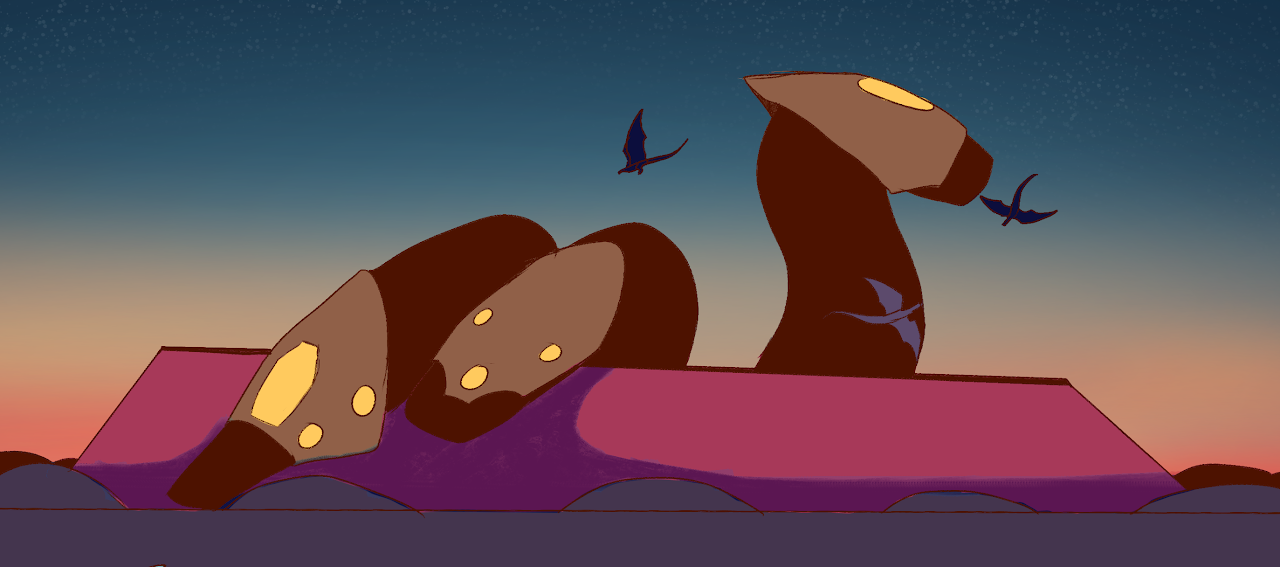
The Prejag: The Caste of Environment, Management, and Coordination.
The Prejager are what is left of Prejarngalmõk, each prejag being a hydra serpent with three masked heads. They are beings of pure resonance and sound rather than biological beings.
The Prejager, being beings that never forget have accumulated thousands of years of knowledge prior to and after Jãrsta and use that knowledge to make decisions on behalf of the õfuth. The first manner in which it does this is through modifying the local climate and environment, making an optimal environment for the comfort and efficiency of the õfuth and it’s denizens. In most cases this means a warm and humid, but not overly hot climate with timed, consitent, and targeted rains along with constant sunlight during the day. They also create the resonance needed to create the sivilão breeds of drekir, ormer, and mavõtur. These climates will often defy the local natural climates, with warp spots appearing in arctic climates, cooler climates forming in tropical regions and wet grasslands rising from the sand.
The next goal is monitering and managing, the Prejag watches the õfuth it lives within at all times, like a panopticon it may not always look at all locations at once though its near omniscience makes it able to see whatever it may focus on and therefore it is generally able to catch any sort of problem within it’s realm.
The last of course is to direct the other castes towards specific goals, everything from the rhythmic morning wake and nighttime curfew to organizing sivilão militias and expeditions for raiding drekir settlements to what the ormer should produce. A prejag is effectively the demigod leader of a õfuth and what they say goes.
The Mavõtur: The Caste of Scholars and Teachers, Inventors and tacticians.
The Mavõtur are the partially magical, mostly biological giant wyverns of the Ëldimor. Often centuries old and carrying knowledge from thousands of studies, they are known to serve amongst the sivilão as the Teachers of all, including the Prejag.
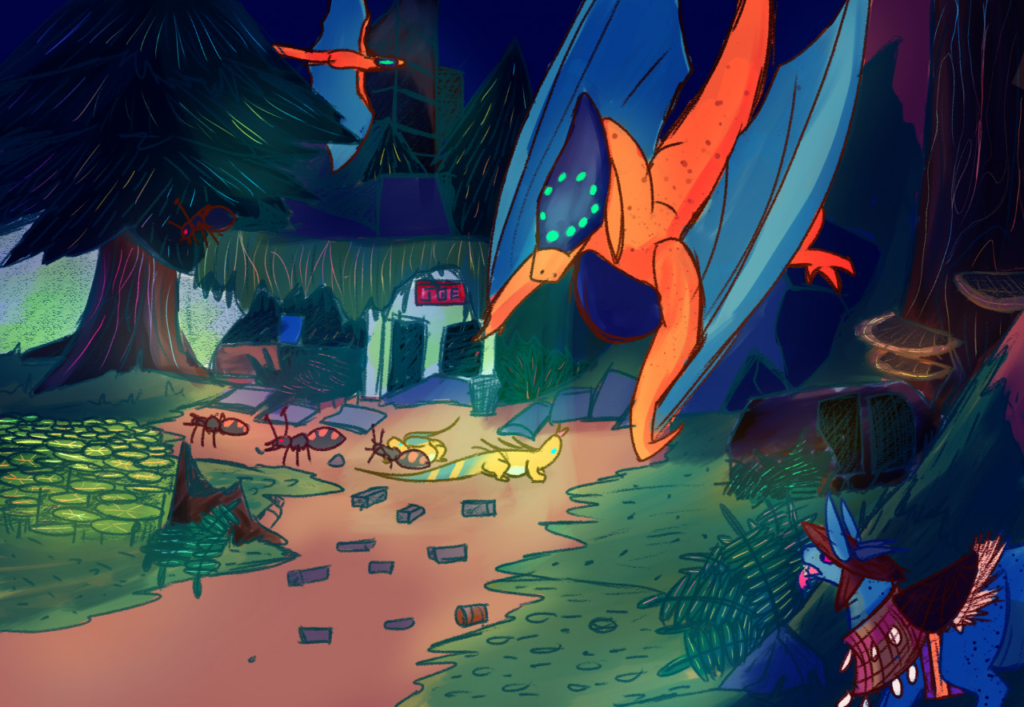
While the Prejag is a being that never forgets, the neverending attention it must spend to it’s õfuth means it can never learn on it’s own. So instead it is the job of the mavõtur to travel through the world, learn all they can about it through complex analysis, and feed that knowledge to the Prejag so that it can make the decisions needed for the õfuth.
Most of a mavõts life is spent in this dedication of transfering useful and relevant information to the Prejag. They are also the caste charged with teaching the drekir offspring, who are always raised seperately from the parents.Their next job is to innovate where needed to insure the efficiency of the sivilão way of life. The goal being to sligly tweak and perfect the systems of the sivilão and adapt them to changing situations to maintain the status quo of the sivilão way of life. These tweaks are designed to be conservative, with slight tweaks, less reinventing the wheel and more making it smoother.
On rare occasions, when a conflict warrants the involvement of the mavõtur, the function both as vicious mages of war and as tacticians to coordinate drãlkir and ormer militias. They are the most powerful dragon mages of the DragonScape and, while they are not nearly as powerful with pulse resonance as the prejager, they are capable of utilizing it to limited effect. They also use their centuries of knowledge and intellect to lead militias and military forces to victory for their õfuth.
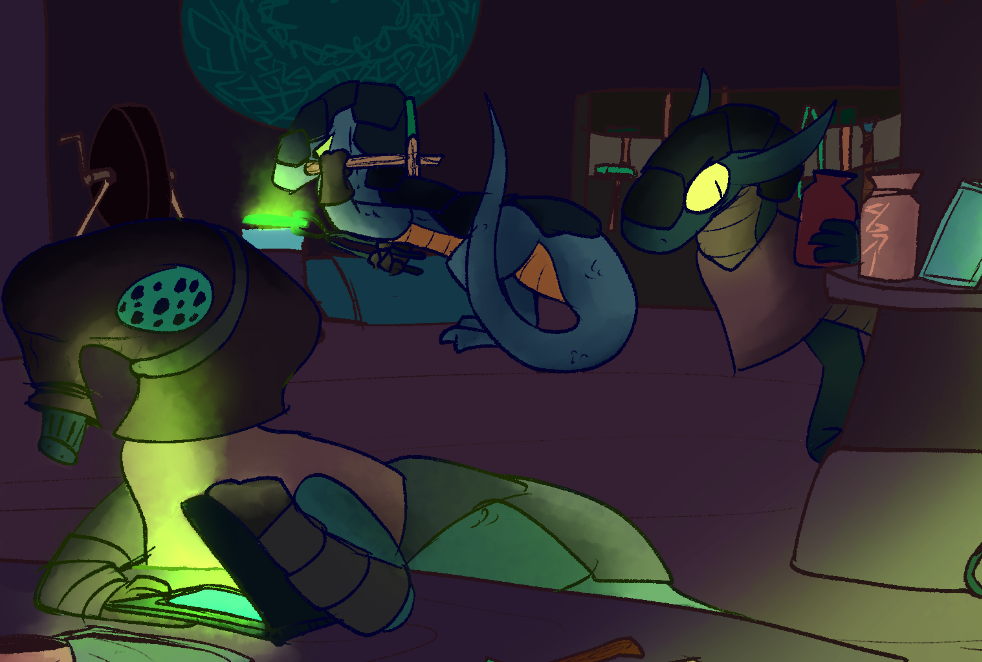
Ormer: The Caste of Industry, Manufacture and Enforcement
The Great Cyclope Drakes of the Ëldimor are known for their precise attention to detail, great strength and size, and are mostly known by the many drekir tribes, chiefdoms and bands of the dragonscape for their ability to inact violence.
However more often than being a warrior militia, the Ormer are the industrial foundation of a sivilão õfuth. The broad primary job of the Ormer is construction and manufacture. All things that are made within sivilão society are made by the ormer. This includes everything from building buildings to smithin stal tools, armor and weapons, to tanning leather and even cooking all the food eaten in the realm. If it was made by the sivilão it was likely created by the claws of an Orm in a workshop. The secondary job is that of enforcement, whether its punishing a group of stubborn drekir taken in from the outside refusing to work or investigating potential issues within the ormer or mavõtur. Or, as many non sivilão societies often see the ormer as, they serve as part of the common warrior militia along with Drãlkir. Ormer often compliment the more mobile drãlkir by serving as a mobile, highly dangerous guardian that is highly dangerous to approach for drekir warriors or drãlk sivilão opponents.
The Drekir: The Caste of Labor
The draconic theropods known as the drekir are meant to serve as pack animals to the sivilão.
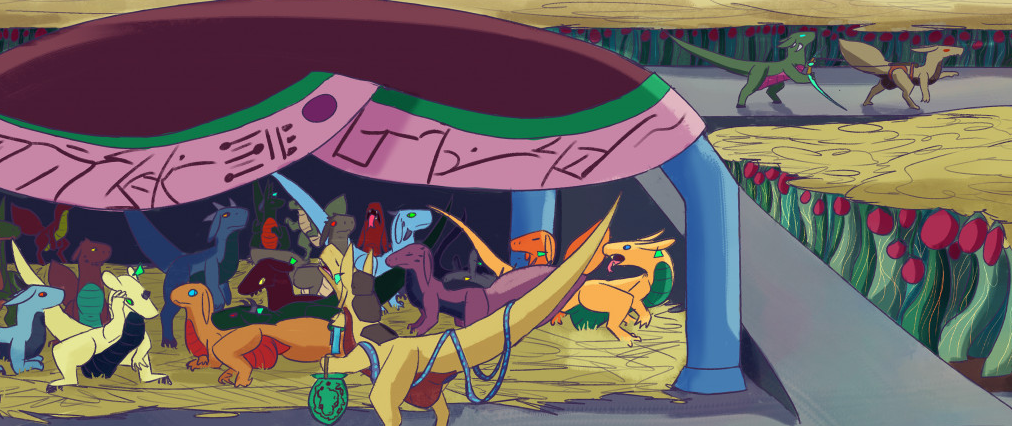
They work all of the jobs that center around the gathering, growing, harvesting, refining, and transportation of raw materials that the Ormer use to manufacture products for the rest of the õfuth.
Drãlkir: A drek subcaste, the loyal tutors and milita.
While there was originally just the drekir, many õfuthar would invent a subcaste of the drekir to help account for the thousands of newcoming drekir who did not know the language, understand Fim Ëodin, or how to do their jobs. These tutor dens of natural lay, loyal drekir would become the drãlkir.
Drãlkir are usually dens of drekir who were laid and raised within sivilão society, having a strong loyalty to and understanding of their õfuth and are assigned primarily with the task of helping the newcoming drekir adjust to their new lives within the õfuth. They help teach drekir how to function in sivilão society as a worker of Fim Ëodin, how to better understand the culture within sivilão realms, and will also monitor their assigned dens for any signs of collusion or uncooperation.
The other job of Drãlkir is to serve within the militias of the õfuth for fighting outside of the õfuth in various wars. They are often the bulk of most armies (as drekir are the majority populatin of the Ëldimor). As they are proven loyal they would be unlikely to take the oppurtunity to disappear within a military campaign away from the Õfuth.
While most Drãlkir are of natural lay, outsider drekir can “promote” into drãlkir through decades of consistent and honorable labor to the sivilão õfuth. though this is exceedingly rare. In these cases individual loyal drekir are taken from their original den and implanted into a den of natural lay drãlkir to provide them the environment needed to succeed.
The Õfuthar: Ring Cities of the Sivilão
The Õfuthar (Yoh-foo-thar or Õfuth singular) are the cities of which the sivilão live, as designed by the doctrines of fim Ëodin. These ring cities are compact, highly urban population centers that are defended by titanic walls. To each õfuth there is one prejag and usually each õfuth is an independent state from other sivilão realms, usually hastily so.
Each Õfuth is organized by generally the same layout, each one being circular and covering anywhere from 10-40 square miles of land. Each Õfuth is additionally divided into 5 distinct districts that are organized into a series of concentric rings. Each of these ring districts, known as Bilõr (Beelkh-Yor), is seperated by a large wall that could range anywhere from 30-80 feet in height depending on the wall. These five bilõr are numbered with each specific bil having a specific series of tasks, industries of production, and purposes with the urbanized lands optimized for their specific goals just as the castes that work them. These rings are the Fimbil, Gurobil, Prubil, Vabil, and Prebil.
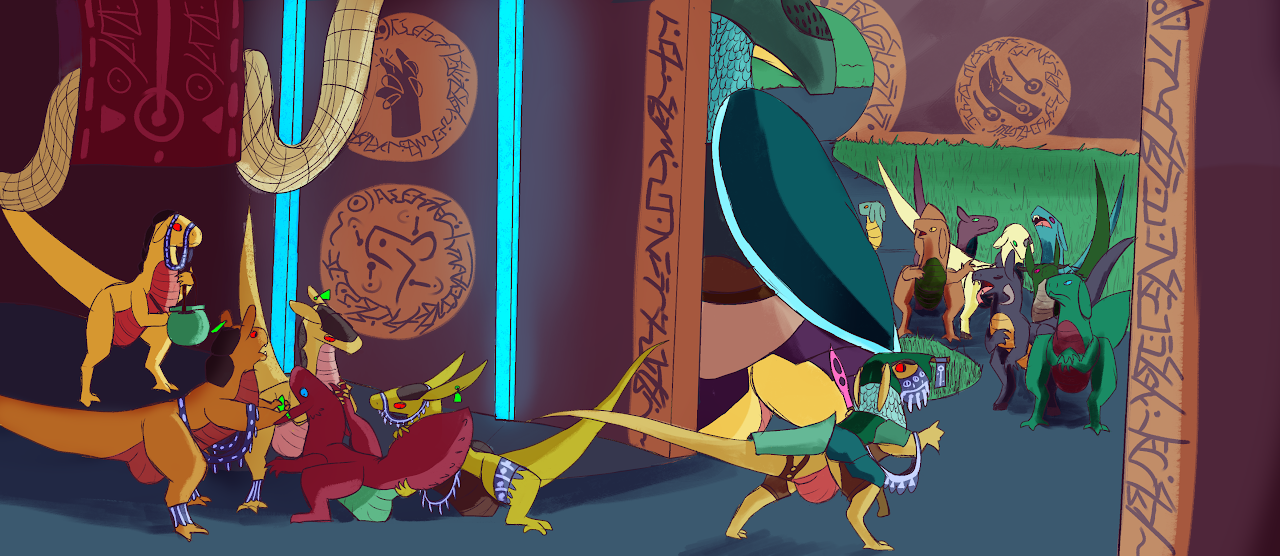
Fimbil: The Security District
The fimbil is the district that is focused on managing the intake flow of allied or taken dragons while also protecting the Õfuth from attacks by enemy realms. This district tends to boast the highest walls, sometimes upwards of 30 meters in height, and each Fimbil is a confusing labyrinth of twisting corridors, chokepoints, and corridors to allow for a defending force to more easily control the flow of battle and repel attackers who breach the walls.
The labyrinths also serve an incidental secondary function of hindering escape efforts from rebellious drekir from within the õfuth who often get lost in the unfamiliar maze. This is also the final set up location for outward bound expedition forces leaving the õfuth to fight wars, capture heretical drekir, or otherwise conduct important missions for their õfuth. Their is no permanent housing nor population in this district but rather daylong shifts headed by various drãlkir and ormer militia.
All drekir who are captured by the sivilão will take an initial physical check in this õfuth before being tagged with an ear tag and moved deeper into õfuth for further integration into their new lives.
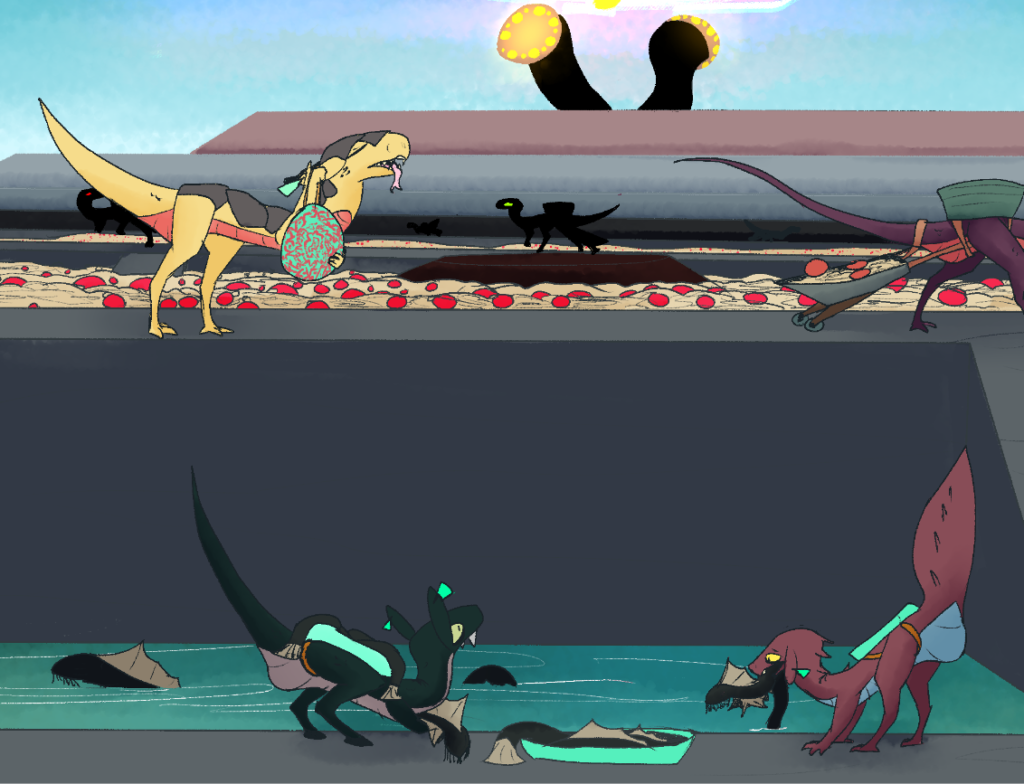
Gurobil: The Agricultural District
The Gurobil is the center of production of many various raw materials and foods. From meat and crops to leather and lumber amongst other various agriculture and animal products. The Gurobil is also both the largest bil of a õfuth and home to the majority of the drekir of a õfuth who work in their assigned sectors of agriculture throughout their entire lives.
the Gurobil is a large open urbanized farmland divided into segments that are home to a wide variety of crops such as romãtor and Tirïtir as well as animals like õfar and lindir. Trees are also likewise grown in vast lumber orchards in this district. All of the housing in the region is designed for the drekir, often taking the form of manastone pavilions open to the air, bedded with straw with baths provided and food/water given every day to the laborers of the gurobil.
Life within this bil as a drek is, in spite of the size of the bil, restricted to a small space of life as you work a particular plot or series of plots of crops or animals. The prejag will awake everyone with the sunrise and morning food and water will be brought by other drekir workers. The remainder of the day will be spent working the plot of land, farming, planting, harvesting, and transporting the harvested food, animal products, or wood to the prubil for further manufacture by the ormer. the day ends with two hours of free time in the evening before the night comes and the morning starts again.
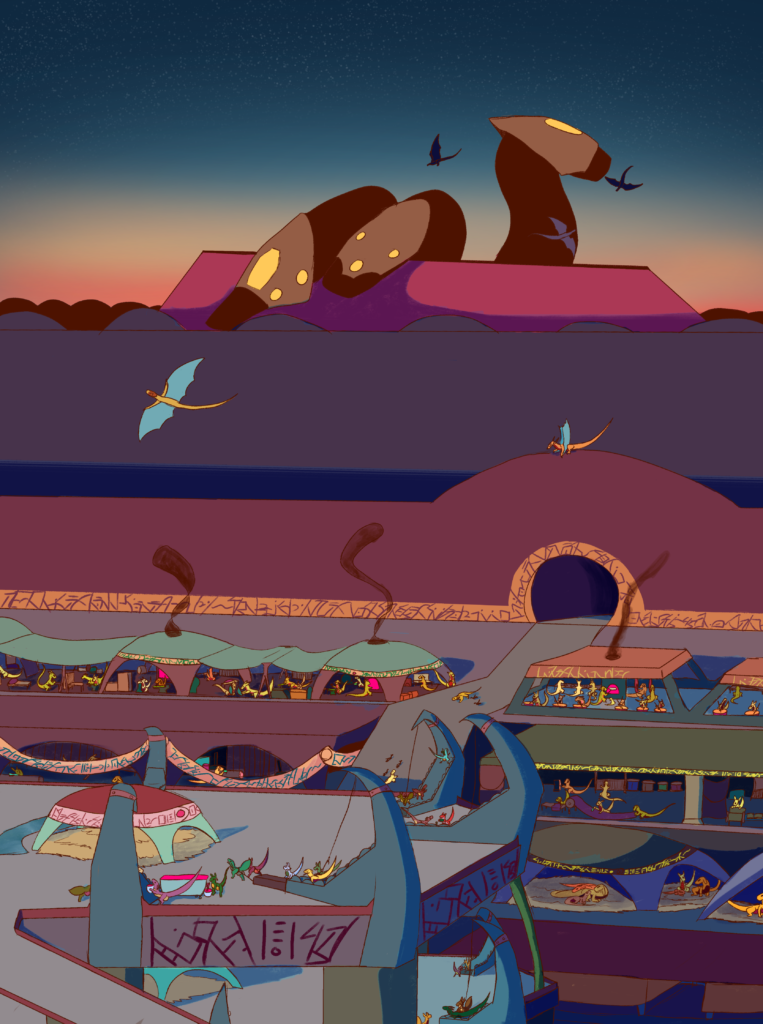
The prubil is the center of manufacture of all things from food to tools, armor and weapons, building materials and clothing. The prubil is itself the most urbanized and densely populated bil of a õfuth and is the home of all ormer within the õfuth as well as many drekir and drãlkir.
The prubil is massive ring of urban sprawl, organized workshops, smithies, kitchens, woodshops, tanneries, clothing workshops, mana processing shops, butcher houses, amongst many other industrial buildings. If it is made within a sivilão society it is made within this district.
The district is also home to the entire production and manufacture of mana products. Accomplished through dozens of massive open air towers known as the Helgistalõr, with massive hollow claws filled with mana and compressed by great weights.
Raw mana is turned into usable manacrust, stalore, and spellglass/flint for use in sivilão society. Orm housing is often similar to the drek housing, open manastone pavilions bedded with straw, though they are often separated by orm familial groups. Drekir often are housed on pavilions that are built into the Helgistalõr or return to housing in the gurobil at the end of the day.
Life within the prubil as a drek is almost always working either to transport materials and manufactured products between orm workshops, or as a laborer in the great helgistalõr towers in long, laborious shifts.
Vabil: The Library of Gongs
The vabil is a õfuths repository of knowledge that has not yet been fed to the prejag by the mavõtur. All the information that the mavõtur gather during their research expeditions of the outside world are inscribed onto massive gongs made of stal, known as kingïdor (keeng-yee-dore). These gongs are hung by the thousands upon the great pillars that fill the vabil.
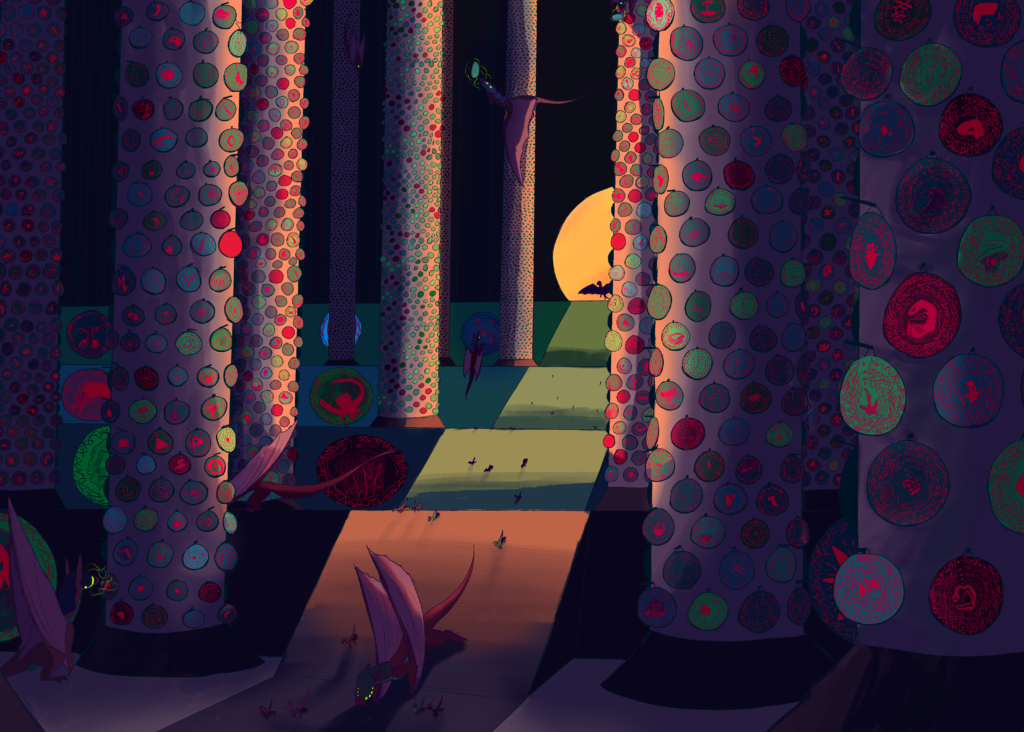
The vabil is only the home of the mavõtur, who build nests throughout the library, spending endless days and nights recording information, and picking knowledge to feed to the prejag.
Prebil: The Great Pot
The Prebil is less of a district and simply the physical building that the prejag resides in. It is often little more than an open arena for the great hydra wyrm to coil within. From this seat the prejag projects it’s power through it’s pulse resonance and it’s recommendations to the other castes of sivilão society.

One thought on “The Sivilão”